Revel ReRun
Wheel Sizes: 29’’ front / 27.5’’ rear
Suspension Travel:
- Frame: 165 mm
- Fork: 170 mm (180 mm compatible)
Geometry Highlights:
- Sizes offered: S, M, L, XL
- Headtube angle: 64°
- Reach (size Large): 480 mm
- Chainstay length: 438 mm
Drive System Highlights:
- Motor: Bosch Performance Line SX
- Torque: 55 Nm
- Power: 600 W
- Battery: Bosch PowerTube 400 (400 Wh)
- Display: Bosch System Controller
- Remote: Bosch Mini Remote
Frame Material: Carbon fiber
Price: Complete bikes from $6,999 to $8,999 USD
Blister’s Measured Weight (XO Transmission Build, Size Large): 45.90 lbs / 20.82 kg
Test Locations: Washington
Reviewer: 6’, 165 lbs / 183 cm, 74.8 kg
Test Duration: 3 months
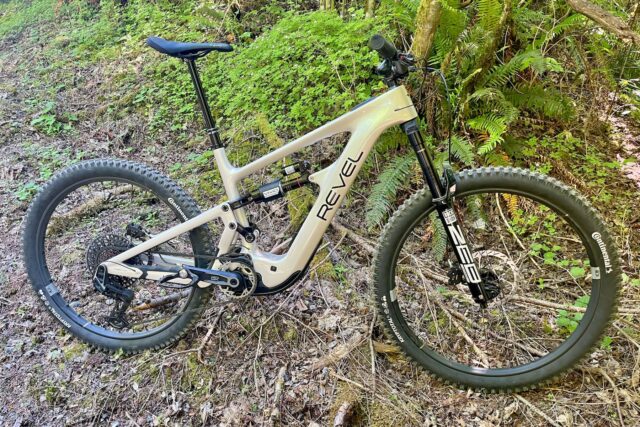
Intro
The ReRun was a bike that nearly didn’t exist, with Revel shuttering shortly after its release. Fortunately, Revel was bought back by its original founder, and the ReRun hit the market. We’ve been spending a lot of time on Revel’s first eMTB this summer, and while it’s an impressive first effort, it’s not without its drawbacks.
[For more on the finer details of the ReRun and its unassisted Enduro sibling, the Ritual, check out our First Look.]
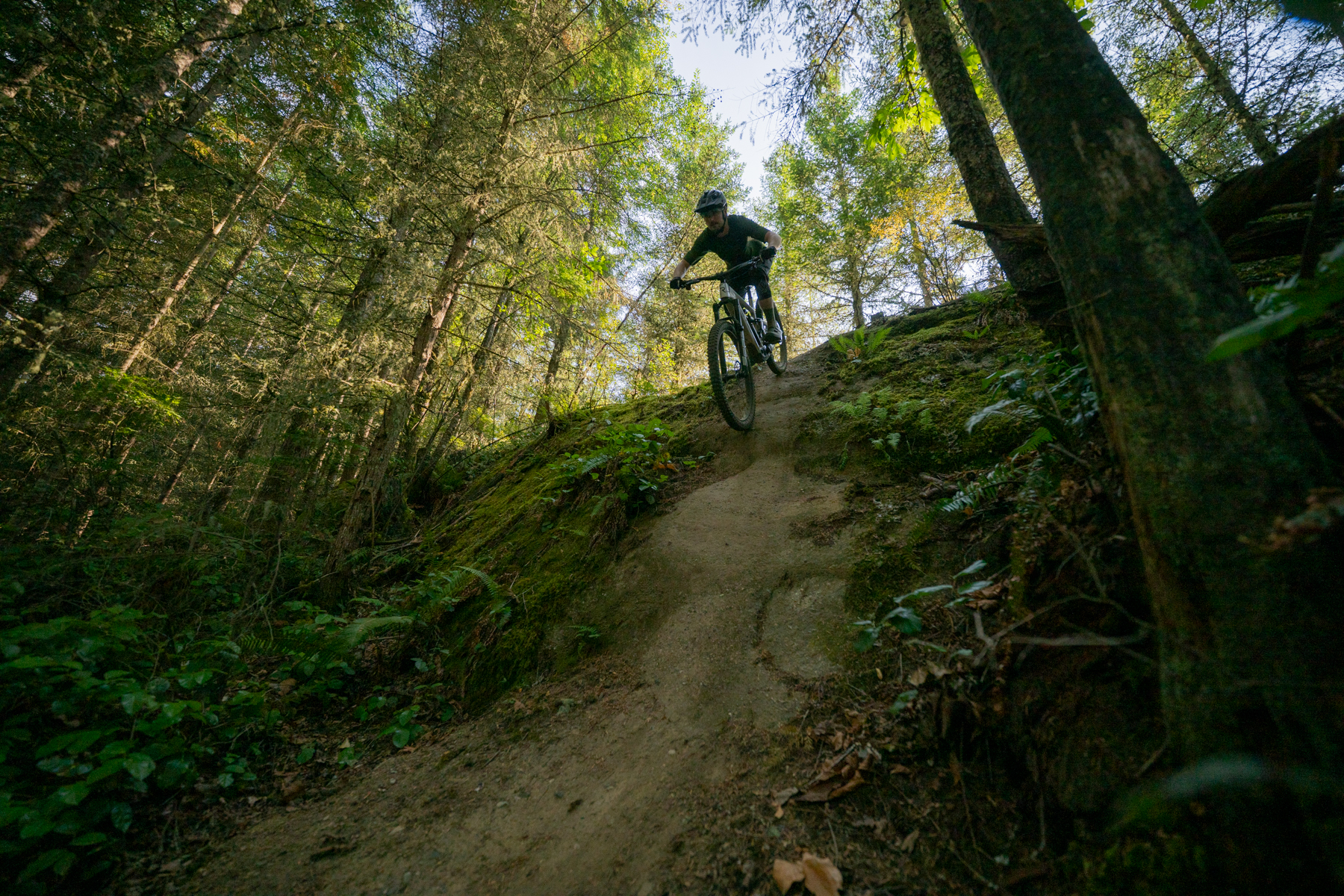
Fit & Sizing
Zack Henderson (6’, 165 lb / 183 cm, 74.8 kg): The numbers on the size Large ReRun are quite similar to those of many other size Large bikes I’ve ridden, and that familiar fit made setup a breeze. The 480 mm reach and 627 mm effective top tube length feel comfortable, though the fairly slack 71.5° actual seat tube angle made for a slightly longer-than-expected seated fit. This is likely down to my saddle height being set higher than Revel’s reference saddle height that they used for their geometry measurements, though I came to appreciate the roomy seated position.
I did find myself stacking a few extra spacers under the stem to bring the bar height up a bit, as the 635 mm stack height is a bit shorter than I would like, and the 20 mm rise on the stock Race Face Era bar is on the low side. The added spacers have the downside of reducing the reach slightly, and I’d imagine that other riders buying the ReRun might find themselves hunting for a higher-rise bar for a bit more front-end height. A taller bar would have been the preferred solution for me, but all of my taller handlebars were spoken for by other bikes in my test fleet.
Otherwise, the ReRun was a comfortable bike from the get-go, without any real geometry quirks.
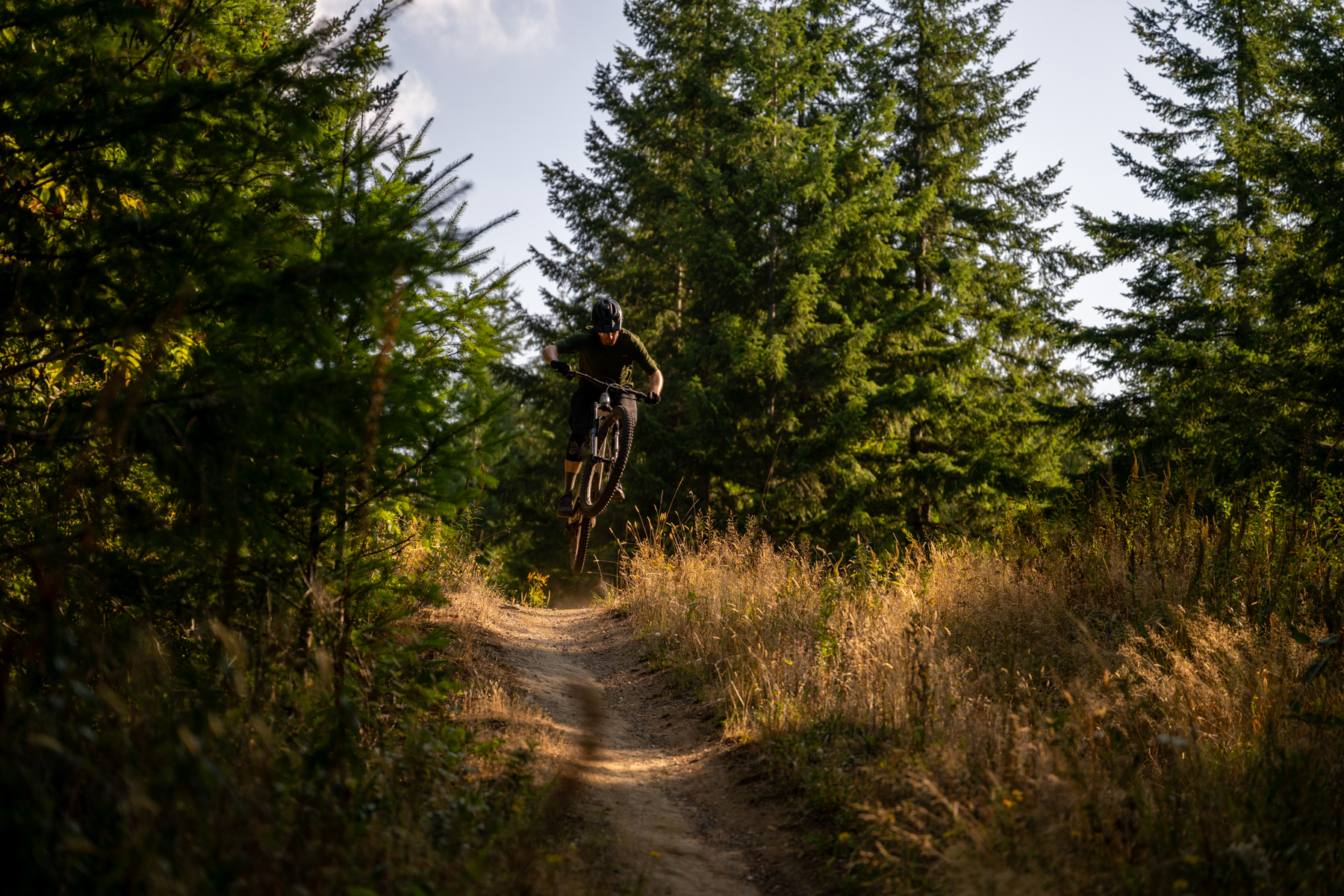
Climbing
Pretty much every eMTB on the market can rip up a fire road with ease, but the ReRun stands out for its efficiency and responsiveness. Revel’s bikes have generally been strong climbers in our experience, and that holds true for their first eMTB, too. Revel doesn’t publish the suspension kinematics for the ReRun, but I’d hazard a guess that it has a good bit of anti-squat — there’s a distinct firmness under power that helps the ReRun feel quite responsive to pedaling inputs. I don’t typically expect to find such firm pedaling support from an eMTB, especially one with Enduro intentions like the ReRun, but it makes for notably snappy acceleration and helps the ReRun feel peppy even when running the motor at lower assistance levels. The ReRun also handles fairly sharply on the way up, rounding tight corners with ease and feeling generally sporty and responsive.
It’s also worth talking briefly about the drive unit. Revel was a latecomer to the eMTB party, and the ReRun has stuck with a lighter, but lower-power, Bosch SX motor. The lighter motor and smaller 400 Wh battery help Revel keep the ReRun’s weight lower, with a goal of preserving some of the more spirited handling traits associated with non-motorized bikes.
As with other lightweight eMTBs with lower power motors, though, the ReRun struggles a bit on really steep climbs. The Bosch SX unit does a nice job of feeling punchy and powerful on flatter trails, but its lack of torque relative to full-power drive units is readily apparent as the trail turns more vertical. As someone who spends time on full-power eMTBs as well, I was sometimes surprised by how abruptly the drive unit started to bog down.
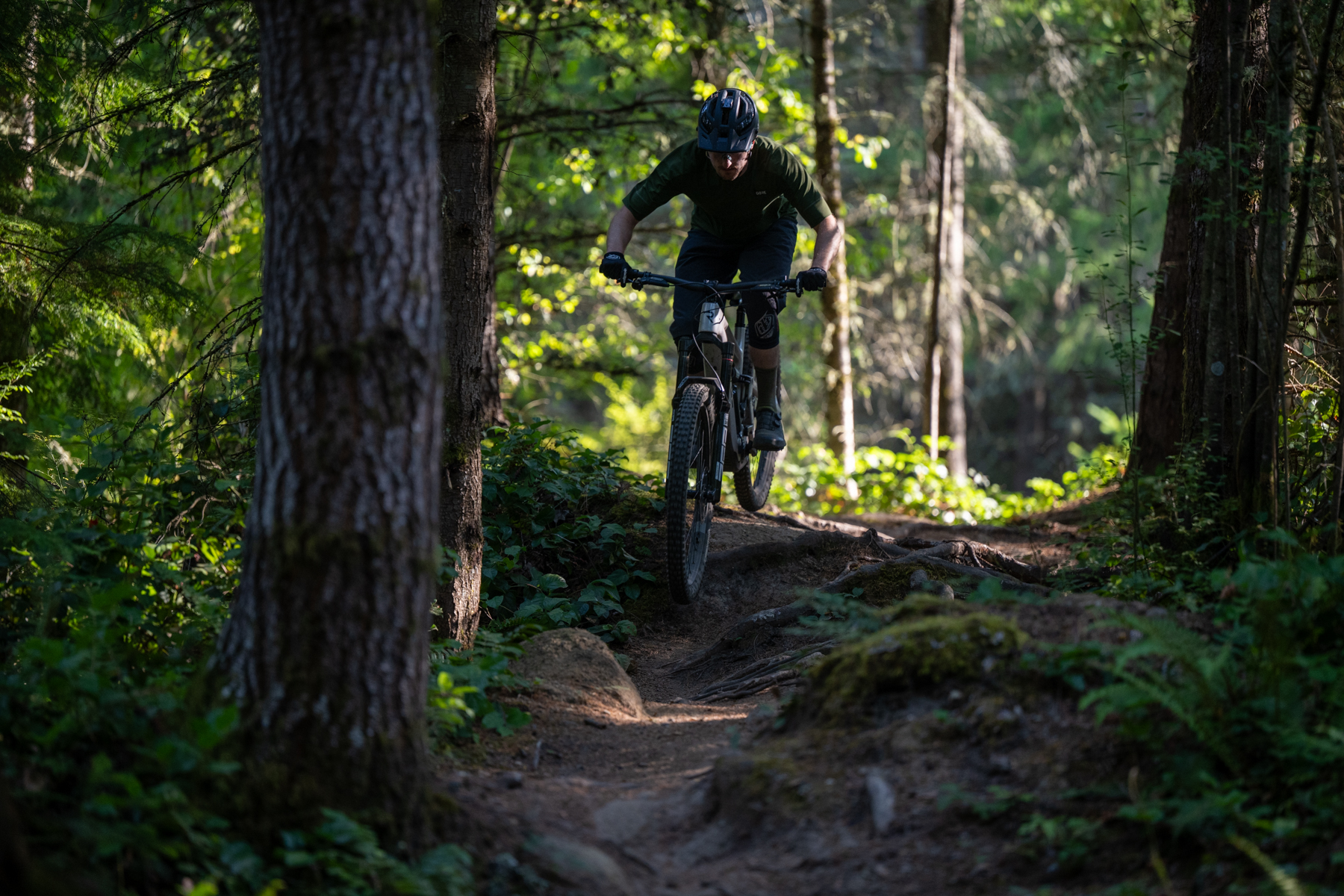
The bigger issue here is the small battery, though. Another hallmark of lightweight eMTBs, Revel has opted to run a smaller 400 Wh battery, and I think that’s too small. I often find that Lightweight eMTBs with lower power motors start to really suck down electrons when being pushed hard on steep climbs, and that holds true here, with the ReRun not quite offering enough range for the longer rides that I typically prefer on an eMTB. I generally found that the 400 Wh battery wasn’t up to much more than 10-12 mile rides with 2,000-2,500 feet of climbing. That was using a mix of modes, too — while I admittedly find myself relying more heavily on the higher output modes on lightweight eMTBs, I tried to use lower output modes when descending and on flatter sections to nurse the battery a bit.
While Revel did supply us with Bosch’s PowerMore range extender, that extra 250 Wh of juice adds 3.3 lbs / 1.5 kg to the bike’s weight, bringing the ReRun awfully close to the weight of full power bikes without the added benefit of more motor output. It also occupies the precious water bottle space on the frame. Despite those drawbacks, I ended up using it consistently to bring the ReRun’s range up to my needs.
In summary, the ReRun stands out for how supportive its suspension feels under power, and it’s very engaging to ride on flatter trails and while climbing as a result. The Bosch SX motor feels punchy and responsive on flatter trails, though the compromised battery range was a frustrating tradeoff for tackling big rides. I see the appeal of the lighter Bosch SX motor for smaller riders or folks who really don’t want to feel like they’re lugging around a full-power eMTB, but it’s important to account for the drop in output that can be quite noticeable on steep climbs. That’s not so much a ReRun-specific complaint as it is one of the broader Lightweight eMTB segment, but it’s an important consideration all the same.
Descending
While the ReRun’s geometry looks fairly typical of the Enduro segment in a lot of ways, there’s more nuance to its descending performance than I expected. I mean that as a positive in some ways, but a negative in others.
Starting with the good parts, the ReRun hides its weight well. The suspension is again sporty, storing and returning energy quite well. The ReRun consequently seems eager to jump and skip its way down the trail, easily clearing gaps. The suspension also feels nice and cushy on landings, and I really enjoyed riding some larger jumps on the ReRun even if they had less than perfect landings.
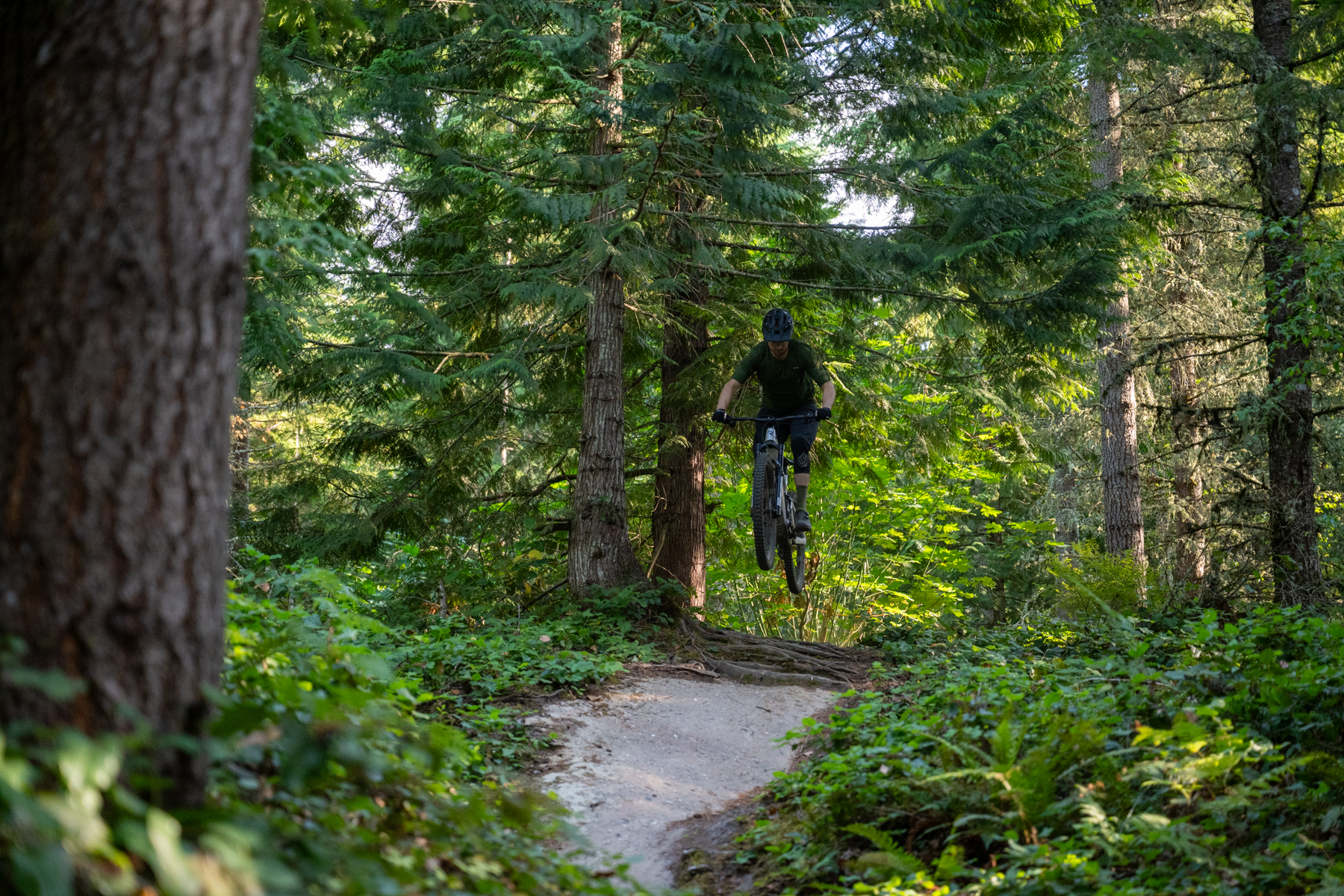
I was also surprised by how eager the ReRun is to snap through supported corners. The frame feels quite laterally stiff, and while it doesn’t feel quite as ground-hugging as some other bikes with lower bottom bracket heights, it can be readily tipped into corners and again returns energy nicely. Keep in mind, I’m making these comments about an Enduro-focused eMTB with 165 mm rear travel. Sure, it’s a lightweight eMTB, but I was still surprised by the agility and energy inherent in the ReRun’s ride quality.
You can’t always have your cake and eat it too, though, and there is a cost to the ReRun’s spirited handling when it comes to poise on really rough and fast descents. I think that’s down to two primary areas: rear suspension performance and overall frame stiffness.
While the rear suspension deserves credit for how responsive and snappy the ReRun feels under pedaling forces, it transmits more feedback than average on the descents. I spent a lot of time tinkering with the RockShox Vivid Air shock, but could never quite achieve the supple and planted feel that I often expect from longer-travel eMTBs. Smaller chatter wasn’t a problem, and more singular, larger vertical impacts (like landing a jump or drop) felt well controlled, but the rear wheel seemed to hang up a little bit and transmit feedback through my feet on the square-edged hits that litter our dusty, blown-out summer trails here in Bellingham. When I was tired or otherwise riding like an idiot, the ReRun didn’t feel like it had my back in the way that some other bikes in this travel bracket do.
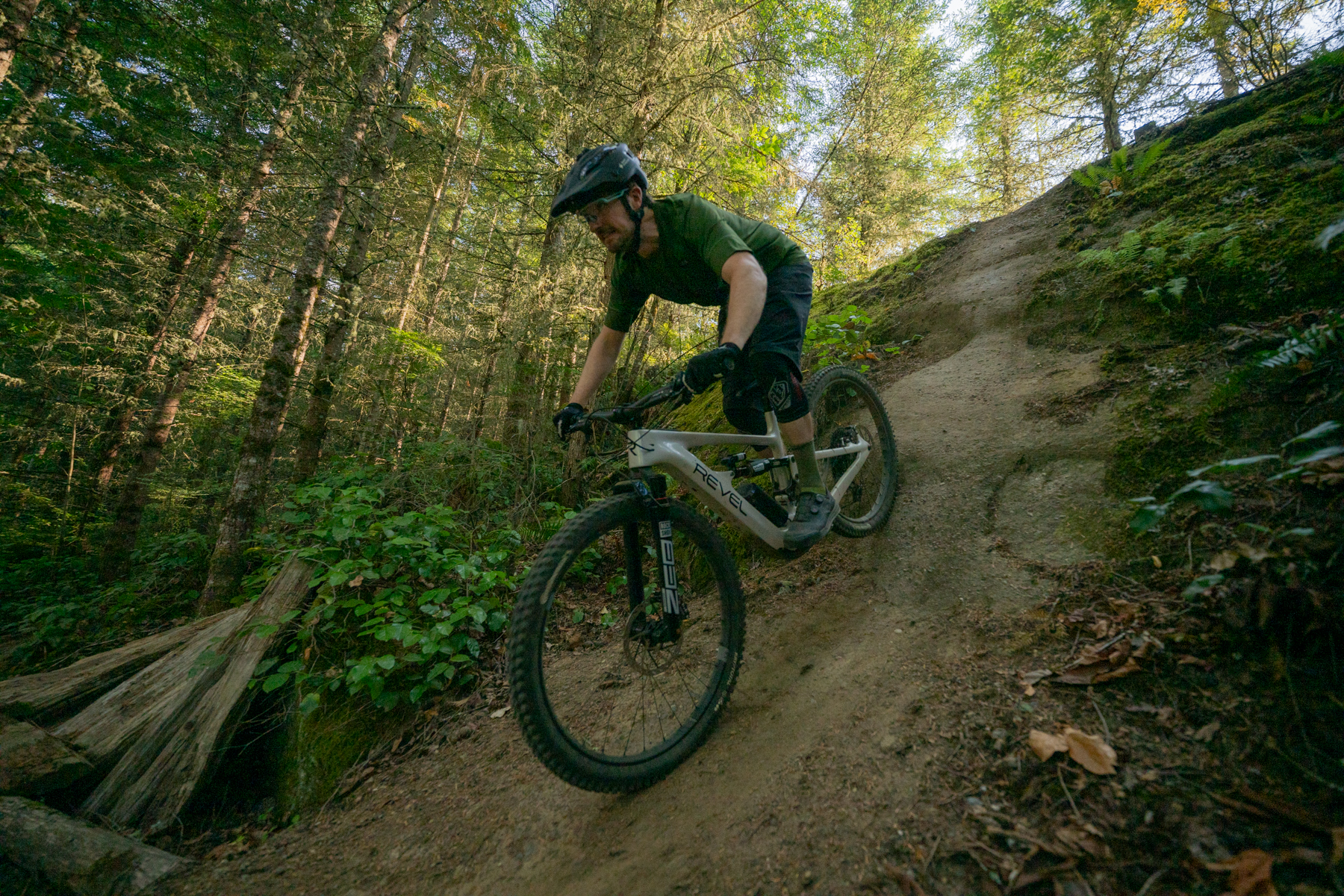
I think that the ReRun’s seemingly high frame stiffness contributes to the jarring feel of those types of impacts, but it had a bigger impact on the ReRun’s ability to hold a line. As mentioned above, the ReRun feels surprisingly snappy and precise in changing direction, but the tradeoff is its tendency to deflect off of individual obstacles rather than damping those lateral impacts through the wheels. I haven’t found the ReRun’s Crank Brothers Synthesis Carbon wheels to be unduly stiff in past experiences with them, so my sense is that it’s down to the frame.
So where does that leave us? The ReRun’s handling is surprisingly eager, and its suspension is more poppy and playful than expected, but it still has the suspension travel to bail its pilot out in tricky situations. The suspension is also still quite sensitive and cushy even with the peppy feel that it affords, but the ReRun doesn’t iron out the trail in the way that other big travel eMTBs can. The ReRun still feels quite coherent as a particularly lively and engaging eMTB that can still take on some burly trails, and riders who want a versatile, long travel eMTB but are nervous about feeling “over-biked” should give it a good, hard look.
The Build
The XO Transmission build of our ReRun tester leaves little to be desired, sporting RockShox Ultimate-level suspension, powerful SRAM Maven Silver brakes, XO Transmission shifting, and Crank Brothers Synthesis Carbon wheels. All of the parts performed admirably, and I didn’t have any reliability challenges throughout testing.
I do have to call out one specific spec choice that I didn’t expect to struggle with, though: the 2.6’’ wide Continental Kryptotal Enduro Soft front tire. While the rear tire performed fairly well in its 2.4’’ width, the 2.6’’ struggled quite a bit in loose-over-hard conditions, exhibiting some rather unpredictable cornering traits on firm surfaces. This was a surprise, especially because I am riding (and enjoying) the DH-casing Kryptotal Fr 2.4’’ Super Soft on another wheelset in the same sorts of conditions. My best guess is that the tall side knobs can’t deform as effectively in the ironically fairly firm Soft compound, and the thinner Enduro casing combines with the larger volume 2.6’’ width to introduce additional casing instability that allows those tall, firm knobs to fold over. Whatever the cause, I never quite gelled with the front tire, and swapped it for something else a bit more trustworthy in the summer conditions.
I’m picky about bike noise, and while eMTBs are never quite as silent as I’d like them to be, the ReRun was on the louder side when rumbling down trails at speed. The Bosch SX motor seemed to have some knocking going on, but there were other rattling tones too that I couldn’t completely trace. The BikeYoke Revive dropper post comes with a thinner 3 mm diameter housing that has been a source of rattles on other bikes too given that it doesn’t totally fill the (typically 4 mm diameter) internal routing tubes. Maybe that was a part of it, but there seemed to be multiple sources of noise echoing through the frame.
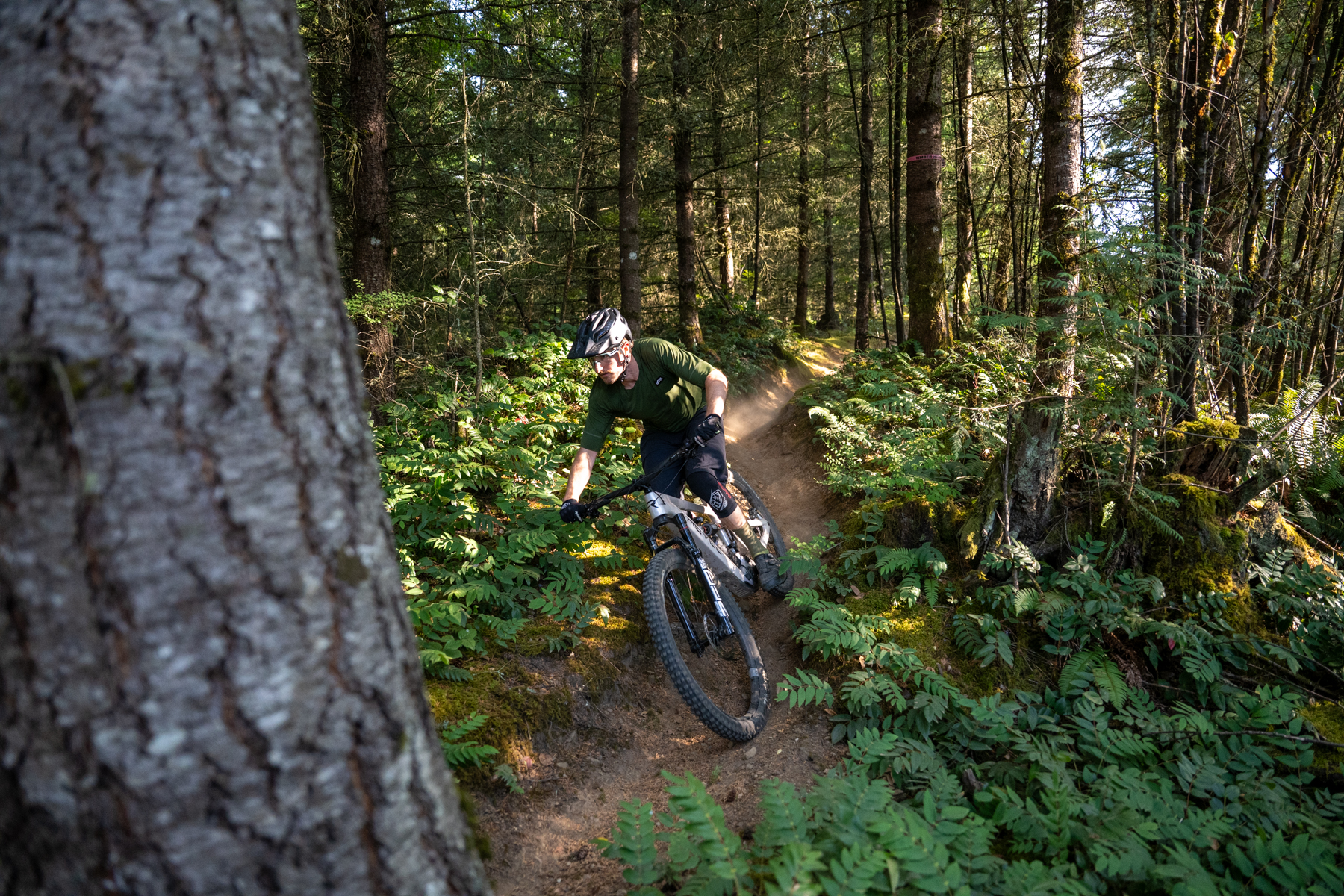
Who’s It For?
The Revel ReRun is a unique Lightweight eMTB, and I think it’s well suited to folks who are eMTB-curious but hung up on having a quicker, snappier feel than most eMTBs can offer. Its lively, engaging handling feels closer to a regular unassisted bike than many others in its category, with the tradeoff of not quite monster trucking through rough terrain in the way that some longer travel eMTBs can.
The ReRun’s playfulness also feels suited to folks who love to charge high speed but smoother trails with lots of jumps and features. It’s a playful and fun bike that is eager to get airborne, and it can generate lots of speed from supported corners.
Bottom Line
Revel’s bikes have often had a distinct ride quality that falls outside of the mainstream, and that has earned them a committed following. As their first eMTB, the ReRun keeps that trend going by merging unexpected quickness and efficiency with a long-travel platform. The lightweight motor and smaller battery bring some compromises, and it’s not my top choice for stability in especially rough terrain, but the ReRun really stands out for how close it gets to the agility and playfulness of unassisted bikes.
